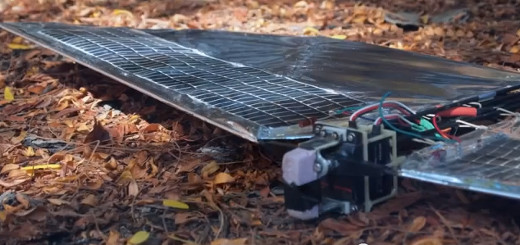Tiny, 3-D printed battery could power miniaturized robots
Research published online this week in the latest edition of Advanced Materials could make possible a generation of miniaturized robots that until now have lacked sufficiently small and powerful batteries to operate.
To create the grain-of-sand-sized lithium-ion microbatteries (shown above), researchers 3-D printed interlaced stacks of battery electrodes less than the width of a human hair, according to a news release from Harvard University, where senior study author Jennifer Lewis is now based. Lewis collaborated with co-author Shen Dillon on the project while working at the University of Illinois at Urbana-Champaign.
How well does it work? According to the researchers, about as well as other commercial batteries.
“The electrochemical performance is comparable to commercial batteries in terms of charge and discharge rate, cycle life and energy densities. We’re just able to achieve this on a much smaller scale,” Dillon said in the release.
That’s exciting for all kinds of tiny devices currently being developed. In recently released videos of the RoboBee, also created by Harvard researchers, a thin power cable is seen dangling from the insect-sized robot because presently available batteries are too large. There’s no word on whether these new batteries will answer that particular power need, but at the very least it’s a step toward creating fully mobile miniaturized robots. And while today’s surgical robots are basically a more precise version of traditional surgery, next-generation robots that are small enough to ingest may be the next truly disruptive medical technology.
You can view a video of the 3-D printing process used to create the battery below.
[ photo courtesy of Wyss Institute for Biologically Inspired Engineering at Harvard University ]



